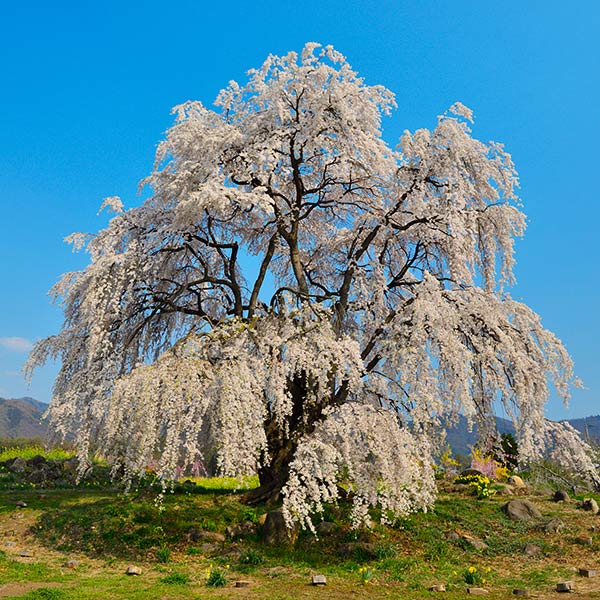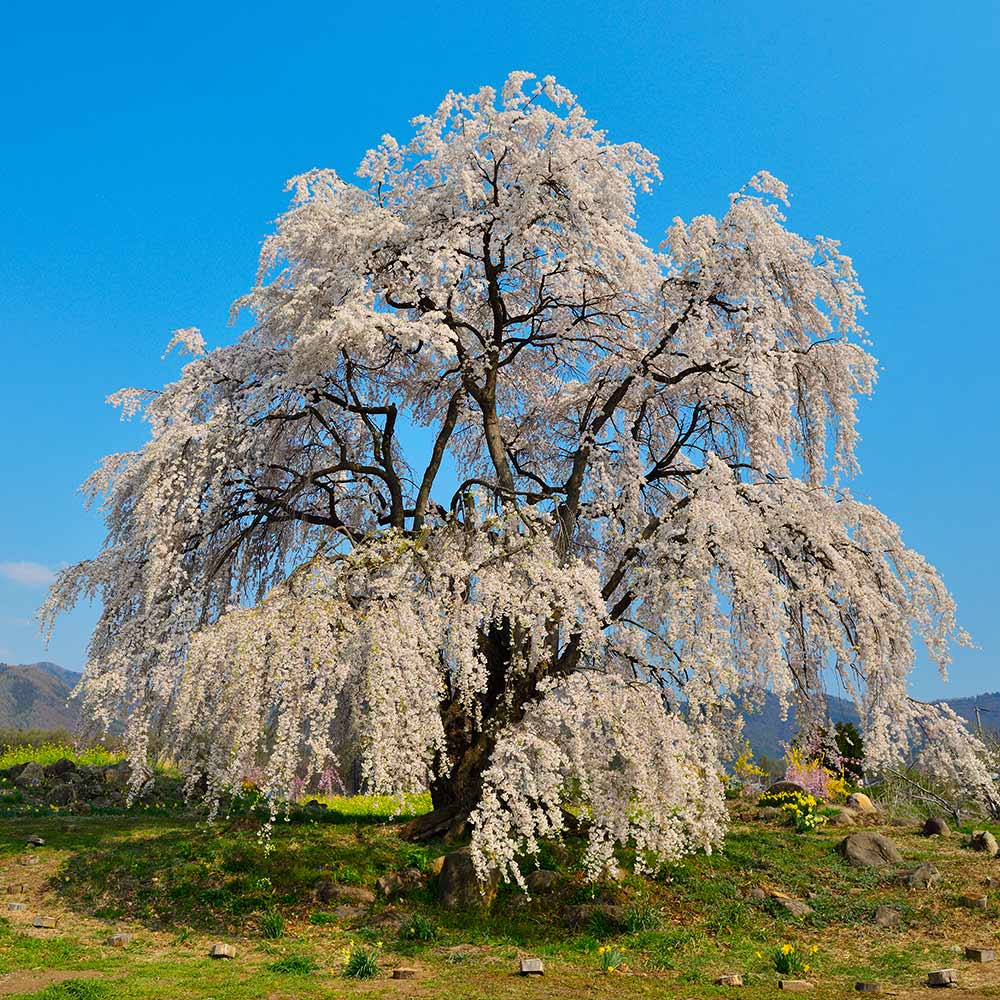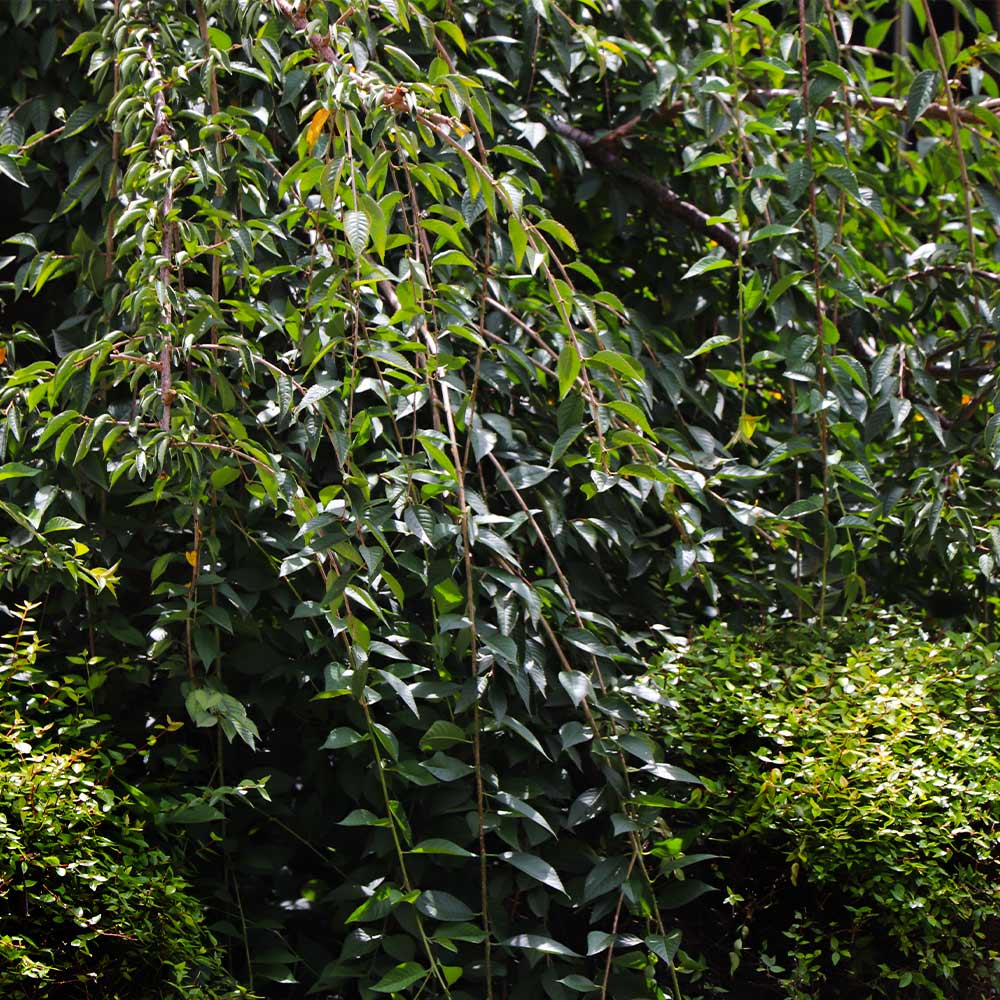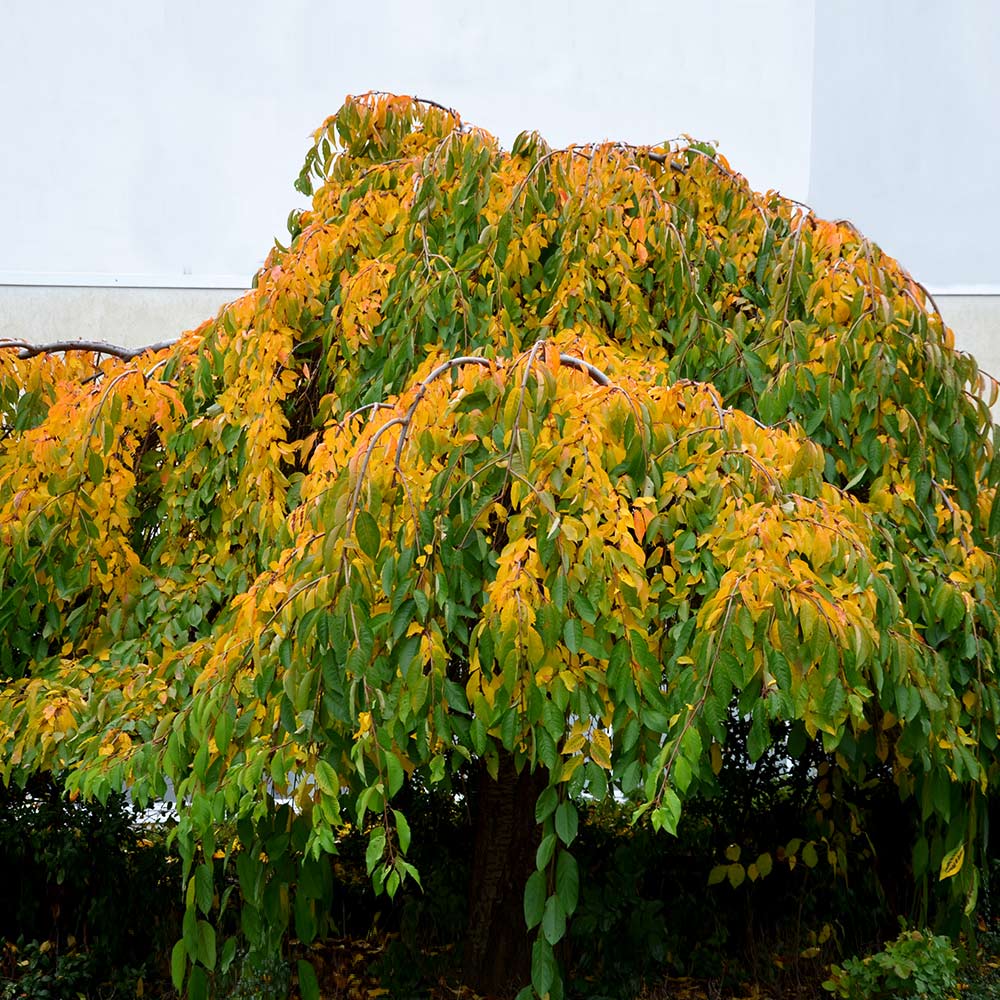Classic Cherry Blossoms on an Elegant, Weeping Form
Why Weeping Yoshino Cherry Trees?
Like the classic pink-white blooms of the Yoshino Cherry? Then you'll love the elegant shape and three-season good looks of this weeping variety!
The Yoshino Cherry Tree, popular in both the United States and Japan, is famous for the Cherry Blossom Festival in Washington, D.C. And this variety has everything that's beloved about the classic Yoshino - on a graceful, whimsical weeping form.
A stunner in any yard or container, it’s hard not to take notice of this small-to-medium sized tree. White-pink blooms cover gently weeping branches in early spring, contrasting dramatically with the tree’s dark bark. Spring blooms are followed by lush green foliage in summer. And the Weeping Yoshino Cherry doesn't stop there - its leaves turn an attractive golden-yellow in the fall, too.
With its compact footprint, the Weeping Yoshino is a great choice for small garden beds or even patio containers. It fits well into more natural gardens, as its free-flowing branches are beautifully unrestrained. However, if you want to place your Weeping Yoshino into a more manicured setting, it can be pruned to maintain a more formal shape.
Why FastGrowingTrees.com is Better
The best part about your Weeping Yoshino Cherry? We’ve grown and nurtured your tree at our nursery for months, well before it ships to your doorstep. Our Weeping Yoshino Cherry Trees have healthy, well-developed root systems (no bare root!) and more mature branching.
When you buy your own Weeping Yoshino Cherry Tree from FastGrowingTrees.com, your landscape gets a legendary tree that will set your yard apart, year after year. Get the iconic blooms and elegant shape of the Weeping Yoshino Cherry Tree today!
Planting & Care
1. Planting: Choose a location with well-drained soil and plenty of sunlight (6 to 8 hours of sunlight per day).
Dig a hole for that’s three times as wide and equal in depth as the root ball. Remove your tree from its original container, position into the hole ensuring that it’s standing upright, and the top of the root ball is even with the ground.
Begin backfilling the hole, tamping down lightly as you go. Once the hole has been completely filled, water to allow the soil to settle and eliminate any air pockets. Finally, apply a 3 to 5-inch layer of mulch around the tree to help enrich the soil as well as conserve moisture and control weeds.
2. Watering: We recommend watering these trees in the morning, at the base. If you’re not sure when to water, simply check the top 2 inches of soil for dryness. If the soil is dry here, it’s time to water your shrub.
3. Fertilizing: Apply a slow-release fertilizer once a year in early spring, before new growth emerges. Follow up by watering the surrounding soil to allow the fertilizer to penetrate into the roots.
4. Pruning: Minimal pruning is needed for these trees. Any broken branches can be pruned back in spring before new growth begins. You can optionally prune in the spring to control the shape.






Comment